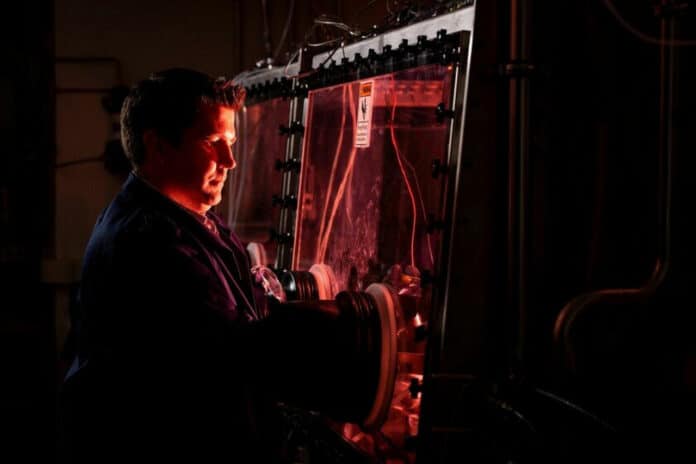A nuclear power plant produces 8000 times more power than fossil fuels and is environmentally friendly. But when accidents do occur, they have major repercussions in the form of nuclear disasters, such as the 1986 Chernobyl incident and the 2011 Fukushima disaster.
Now, BYU professor and nuclear engineering expert Matthew Memmott and his colleagues have designed a new system for safer nuclear energy production: a molten salt micro-nuclear reactor that may solve all these problems.
Nuclear reactors in America usually fall under the category of Light-Water Reactors. Uranium atoms are split to create energy, and the products left over will radiate massive amounts of heat. The leftover materials and heat are stored in solid fuel rods that require running water to keep everything cool enough. If the rods don’t receive enough cooling water, they can overheat, and the entire facility is at risk of a nuclear meltdown.
The new solution proposed by the BYU researchers will store these radioactive elements in molten salt instead of fuel rods. “Nuclear energy can be extremely safe and extremely affordable if done the right way,” Memmott said. “It’s a very good solution to the energy situation we’re in because there are no emissions or pollution from it.”
Nuclear elements can emit heat or radioactivity for hundreds of thousands of years while they slowly cool, which is why nuclear waste is so dangerous. In Memmott’s new reactor, all the radioactive byproducts are dissolved into molten salt during and after the nuclear reaction occurs. Salt has an incredibly high melting temperature of about 550°C, and it doesn’t take long for these byproducts to drop below the melting point. The radiated heat is absorbed into the salt, negating the danger of a meltdown at the small nuclear power plant the engineers built.
In addition, the new molten salt nuclear reactor design has the potential to eliminate dangerous nuclear waste. The products of the reaction are safely contained within the salt, with no need to store them elsewhere. Also, valuable elements, such as cobalt-60, gold, platinum, and neodymium, can be removed from the salt and sold.
Memmott’s molten salt nuclear reactor is 4 ft x 7ft (a typical nuclear power plant is 30 ft x 30 ft), and because there is no risk of a meltdown, there is no need for a similar large zone surrounding it. According to researchers, this small reactor can produce enough energy to power 1000 American homes. Everything needed to run this reactor is designed to fit onto a 40-foot truck bed, meaning this reactor can make power accessible to even very remote places.
“For the last 60 years, people have had the gut reaction that nuclear is bad, it’s big, it’s dangerous,” Memmott said. “Those perceptions are based on potential issues for generation one, but having the molten salt reactor is the equivalent of having a silicon chip. We can have smaller, safer, cheaper reactors and get rid of those problems.”
